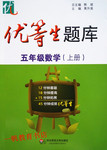题目内容
From E-mail to online shopping, you may think you’ve heard everything there to know about the electronic frontier (新领域).But with hundreds of thousands of Web pages being added weekly, there are plenty of surprises out there.Here are some of the most intriguing (有迷惑力的).
……
Put your kid on a greeting card.Here is how: simply take some pictures with a regular camera, and then ask the photo service to develop them digitally (数字化).For a small fee, you’ll receive your photos on a desk.Put that into your computer and, with a few clicks of the mouse, you can view your photos on the screen.With a few more keystrokes, you can attach the photos to email and send them to friends and relatives worldwide.
Sign on to one or several greeting card’s Websites (http://www.cardcentral.net/ is an index of more than 1200 electronic card sites) and create an electronic birthday or holiday card.Using your digital photos, you can paste your grandchildren onto the cover.
If you don’t want to use your own photos, go to cards.amzon.com to browse (浏览) hundreds of images in over 30 categories…all of which you can attach to an electronic greeting card for free.For a nominal fee(很低的费用)you can choose from a library of 75,000 images at http://www.phontodisc.com/.
Call Australia for free.To have a telephone conversation over the Internet, the person you want to talk to no longer needs a computer.Now all you need to talk to someone in Sydney is one computer with speakers, a microphone, a sound card and some software (available at http://www.vocaltec.com/ or Mricrosoft.com).Typically, you’ll pay a monthly fee (usually under $20) to a service provider, but after that, the calls themselves are local.Sound quality is the same as that of a cell phone.
Even if you don’t have a computer, you can still use the Web to reduce your long distance phone costs.Some companies offer a service that lets you use an ordinary phone to call another ordinary phone, but charge only a few cents per minute for US calls, because they send them through the Internet.
Today 48 percent of American homes have computers…a figure that is expected to climb to 60 percent by 2003.And by the end of the next decade, Americans will likely be spending more time shopping, banking, investing and learning on the Internet than in the real world.If you can’t do or find something on the Net today, you probably can tomorrow.
1.Over the Internet, you ________.
A.can hear everything there
B.will meet with plenty of surprises which come out every week.
C.will hear the things about the electronic frontier
D.can find some things are very interesting
2.From the passage we can infer that _________.
A.fewer people will use the Internet in the following ten years
B.more people will study in the regular school by the end of the next decade
C.fewer people will go to the regular school in the following ten years
D.more money will be needed for a long-distance call by the end of the next decade
3.If you want to attach to photo to your e-mail, you have to ________ it.
A.digitalize B.take C.picture D.send
4.Which of the following is NOT true?
A.A telephone conversation over the Internet can be carried out without computers.
B.Over the Internet, the receiver of the phone conversation doesn’t need a computer.
C.The phone conversations over the Internet are much cheaper.
D.The long-distance calls are local themselves.
BCAD

 优等生题库系列答案
优等生题库系列答案